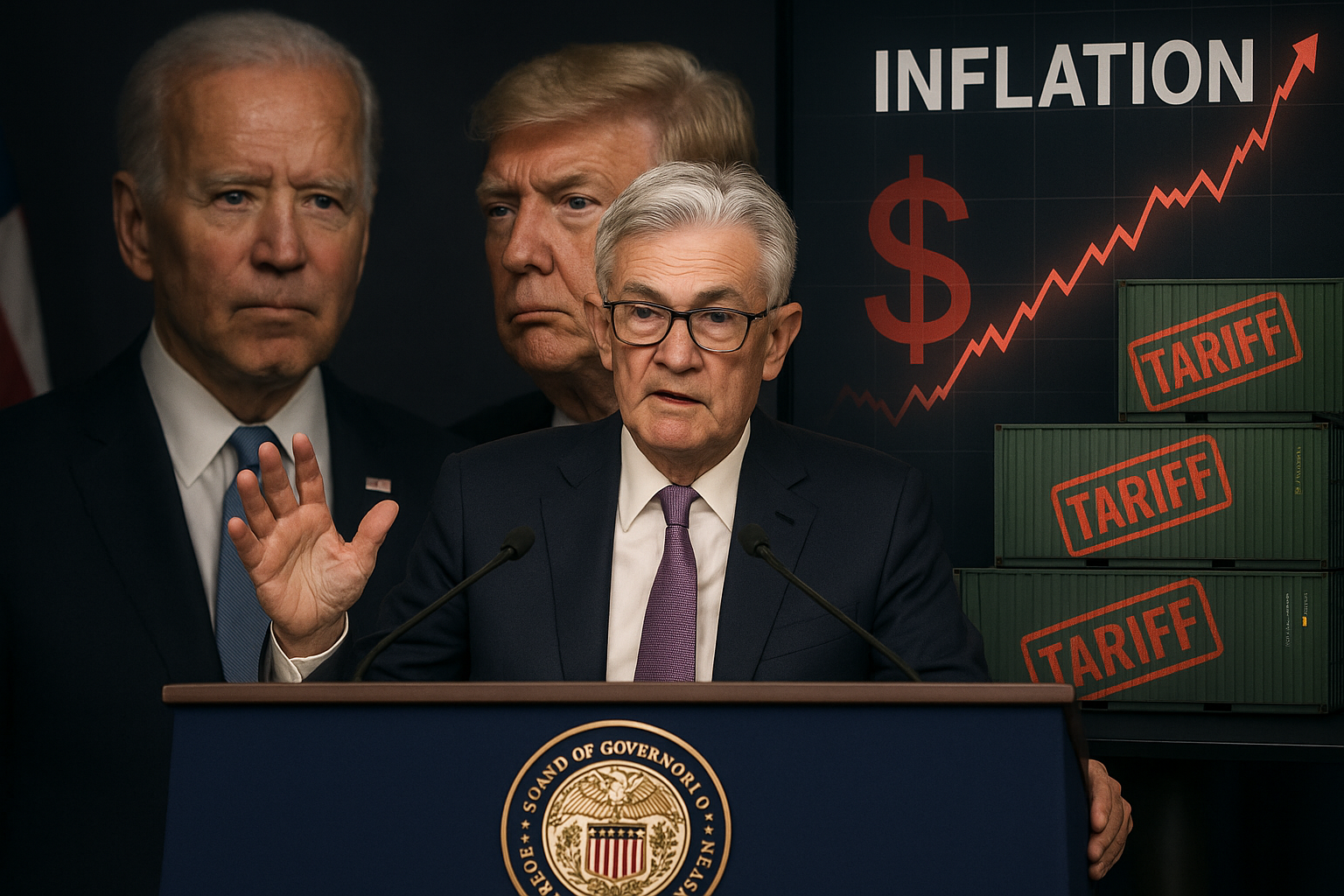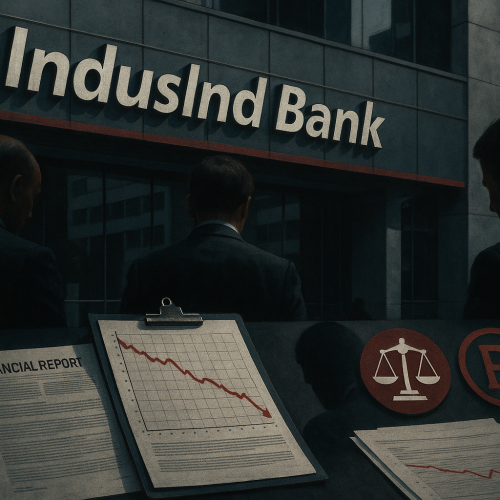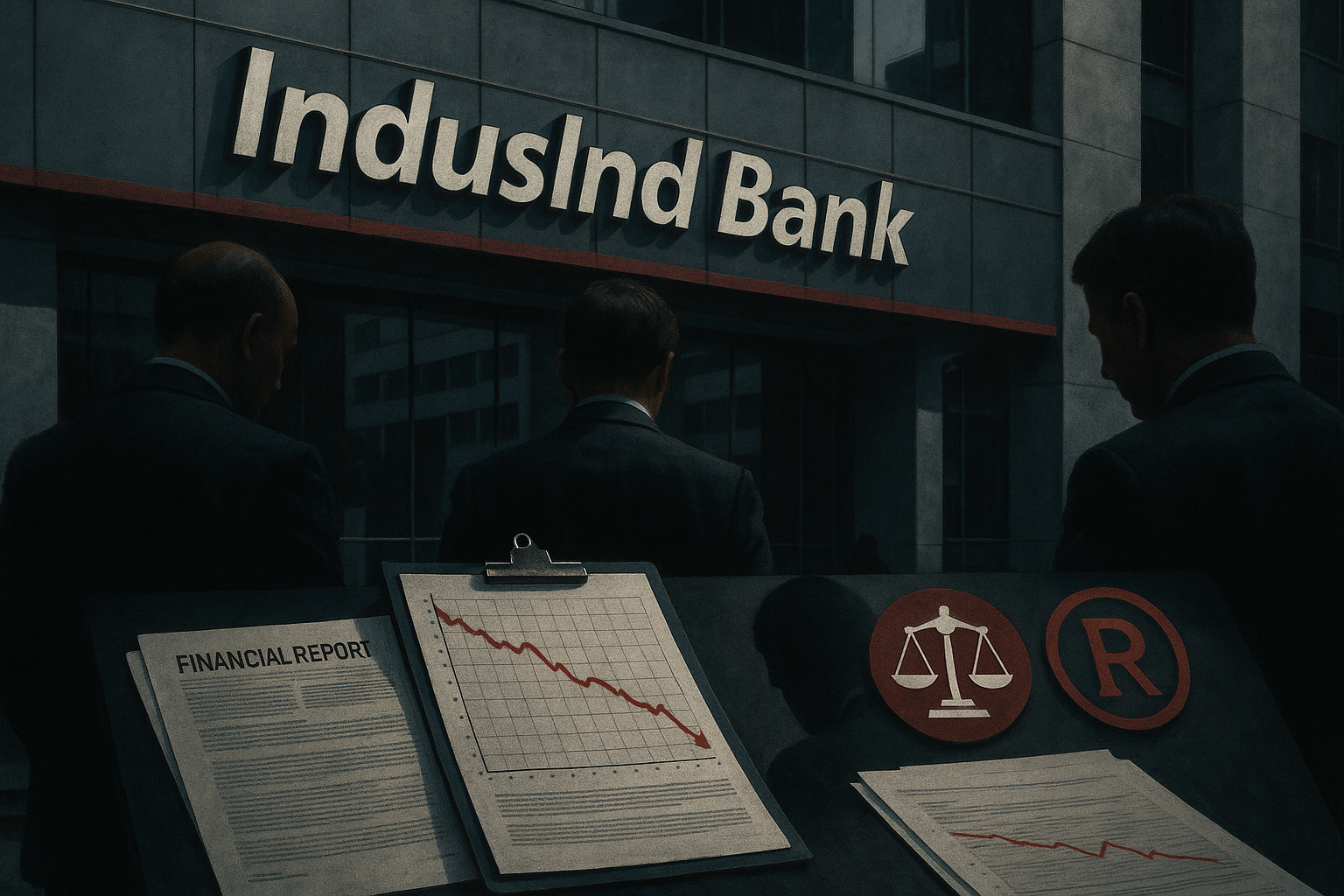As the 2024 U.S. elections draw closer, the potential return of Donald Trump-era tariffs is once again making headlines. With Federal Reserve Chairman Jerome Powell signaling caution on rate cuts, and the dollar showing signs of depreciation, global investors are increasingly worried about the implications for inflation, trade, and market stability.
The current economic mix—stubborn inflation, tariff rhetoric, and political uncertainty—is pushing policymakers and analysts to rethink their models for the post-pandemic U.S. economy, while emerging markets like India must prepare for ripple effects.
Backdrop: Rising Tariff Talk Meets Monetary Crosswinds
Trump has hinted at universal tariffs, including a 10% blanket import tax and possible 60% tariffs on Chinese goods if reelected. This would mark a sharp departure from the Biden administration’s more multilateral trade posture.
At the same time, Powell’s Federal Reserve is caught in a delicate balancing act: inflation remains sticky, employment robust, and financial conditions still relatively tight, yet pressure is mounting to lower rates. The fear is that new tariffs—if implemented—could reignite inflation, undoing progress made since the post-COVID peak.
Key Dynamics at Play
-
Tariffs = Tax on Consumers:
Higher import duties raise input costs, potentially driving consumer price inflation, especially in categories like electronics, auto parts, and textiles.
This could delay or reverse the Fed’s easing cycle. -
Dollar Weakness = Global Spillovers:
A declining U.S. dollar—caused by rising deficits, dovish rate expectations, or loss of investor confidence—can boost U.S. exports but also raise the price of imports, worsening inflation.
For emerging markets, this increases capital flow volatility. -
Powell’s Policy Puzzle:
The Fed cannot ignore politically driven supply shocks like tariffs. Yet with real interest rates still restrictive, there’s room for the central bank to move carefully toward rate normalization in 2025—unless inflation flares up again.
Expert Viewpoints
“If tariffs are imposed at a scale similar to Trump’s earlier term, the U.S. could see a second wave of inflation. It would likely push back any Fed rate cut into mid or late 2025,” said CA Manish Mishra.
“The combination of a weaker dollar and rising U.S. tariffs could lead to a paradox: stronger domestic manufacturing in the U.S., but higher global inflation. India must hedge against both,” added CA Manoj Kumar Singh.
Global Market Implications
-
Equities:
Volatility in U.S. equities is likely to spike if tariffs become central to the 2024 campaign. Sectors like semiconductors, autos, and retail are vulnerable. -
Commodities:
Rising U.S. inflation expectations could lift gold and oil prices, with gold often seen as a hedge against dollar devaluation. -
India & EMs:
A weaker dollar usually helps emerging markets by easing external debt pressure, but global inflation can neutralize these gains.
Conclusion
As the world watches for signals from the Federal Reserve and the U.S. election trail, a complex trio—tariffs, inflation, and currency dynamics—is reshaping the narrative. The Fed’s next moves, along with political shifts, will not only determine the fate of the U.S. economy but also influence trade flows, monetary policy, and asset prices across the globe.












